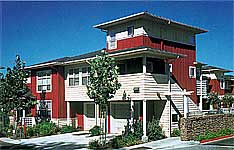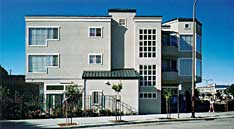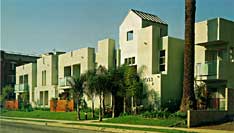|
Visual Complexity
Consider providing as much visual and architectural complexity as possible to the building's appearance while maintaining a hierarchy of scale and a unified overall form. Consider breaking a large building into smaller units or clusters. Consider variations in height, color, setback, materials, texture, trim, and roof shape. Consider variations in the shape and placement of windows, balconies and other fašade elements. Consider using landscape elements to add variety and differentiate units from each other.
Fašade projections and indentations, changes in height, variations in materials and colors, all combine to add rich visual complexity to these multifamily projects from across the country.
|
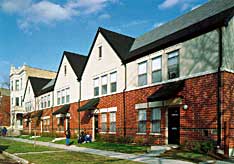 | 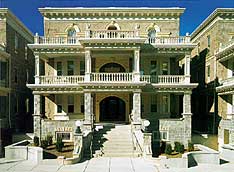 |
Even in relatively flat facades, visual complexity can be achieved by changes in material and color and by variations in the shape and direction of the roof.
(West Town Cluster Housing)
|
Many existing buildings, like this renovation project in Philadelphia, already have facades with a lot of visual complexity.
(Regent Terrace Apartments)
|
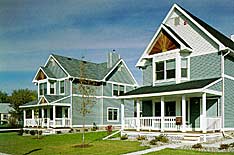 |
Bay windows with their own roofs, special materials in the small gables, and variations in color, add strong visual complexity to the street facades of these single-family homes in St. Paul, Minnesota.
(Lyton Park Place)
| |
|
